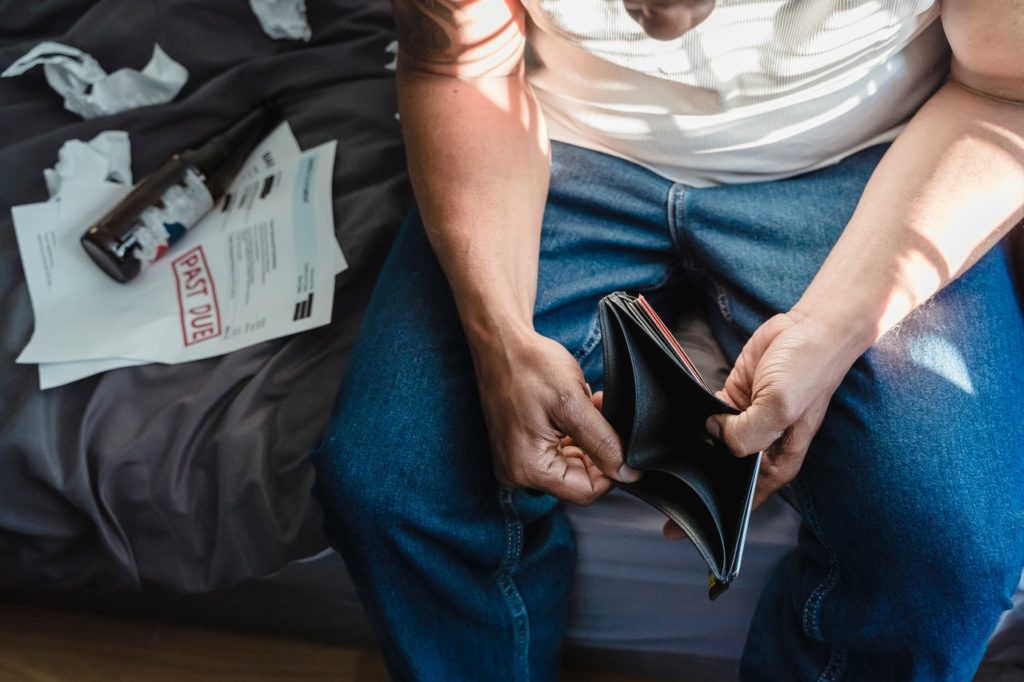
The word “bankruptcy” comes from the Italian banca rotta, which means “broken bench”. The story is that bankers used to do their business over a bench. If a banker defaulted on a loan or was unable to pay, his bench would be broken. The broken bench would serve as a symbol to show that people should not do business with that banker.
Before the creation of bankruptcy laws, there was no concept of it. In ancient Greek and Rome, if you were unable to repay your debts, your belongings would be sold and you and your family would be forced into slavery until the debts were repaid. It was, however, different to regular slavery because once the debts were repaid you would be freed. There wasn’t a concept of a welfare society and people who couldn’t work didn’t eat. People who borrowed and couldn’t pay the money back were forfeit. In the eyes of the law, it was no different than theft.
The process of debt repayment obviously existed, but in 1542, it was set down in law for the first time in the world. In England, “The Statute of Bankrupts 1542” was passed into law. It provided some protection for the debtors, but the main reason for it was to protect the creditors. The law was passed because some people were borrowing as much money as they could and then running away. The law was to stop debtor fraud and a claim could only be filed by a debtor, not a creditor. If a debtor was found guilty, they would have all of their belongings confiscated and sold to repay the debt. If the debt was large enough, they could be imprisoned or even executed.
A few years later, in 1557, King Philip II of Spain had to declare bankruptcy, which was the first sovereign nation to do so. Spain appeared to be very wealthy, but the wealth was an illusion and Philip failed to invest in his country’s industries. Most of Spain’s money came from the Americas and imports. This could not go on forever, though, and soon other countries started to compete in the trade. That, coupled with King Philip’s extravagant spending, meant that the country ran out of money and had to borrow heavily. He declared state bankruptcy in 1557, 1560, 1576, and 1596. It is interesting to note that a regular person in debt could be imprisoned, but nothing of such note happened to the king.
In 1705, the “Bankrupts Act” was passed in Britain and it was the first law which started to protect the borrower. It gave the Lord Chancellor the power to step in and mediate in bankruptcy cases. The law was still on the side of the creditor and the bankrupts were still seen as “offenders”, but it was a start. It is unlikely that the Lord Chancellor would have stepped in to help poor people.
In 1813, the “Insolvent Debtors Act” was passed. This gave debtors protection from being imprisoned. If they had less than £20 in assets, they had to be released from prison after 14 days. If they had more money, they had to use that money to repay their creditors. Even though it offered more protection, the law was still on the side of the creditors.
The “Bankrupts Act 1825” was the first law that allowed debtors to start their own bankruptcy proceedings. They still needed to have the permission of the creditor to do it, but it showed a big shift in public perception of debt. I believe that this shift is probably connected to the Industrial Revolution. With more people living in the cities and more industries arising, there was probably a greater number of people who were going into debt. It would have been something that was very common and very visible, perhaps pushing society to want to change.
Another change in the perceptions of society came in the 1720s with the collapse of the South Sea Company and the resultant South Sea Bubble. Regular people had started to buy shares in different companies after companies like the Dutch East India Company and the South Sea Company were formed. They changed the way they traded and spread their risk around a large number of people by selling shares. A bubble formed, the price of the shares went up, people borrowed to buy, and then the price dropped. A lot of people were left in debt and the number of bankruptcies rose. People were afraid to invest in companies after this and the economy stalled. The government came up with a system where companies could take on a separate legal personality and give limited liability to their shareholders. Companies could declare bankruptcy without their shareholders having to pay for it.
The bankruptcy laws have evolved a lot from then, but it is interesting to see where they started. It is also fascinating to see how the views of society towards debt and debtors changes with time. And this is what I learned today.
Photo by Nicola Barts : https://www.pexels.com/photo/man-holding-a-leather-wallet-7927426/
Sources:
https://core.ac.uk/download/pdf/322623625.pdf
https://eml.berkeley.edu/~webfac/cromer/e211_f07/voth.pdf
https://en.wikipedia.org/wiki/Bankruptcy_Act
https://en.wikipedia.org/wiki/Statute_of_Bankrupts
https://en.wikipedia.org/wiki/Debt_bondage
https://en.wikipedia.org/wiki/Bankruptcy
https://www.bankruptcydata.com/a-history-of-bankruptcy

